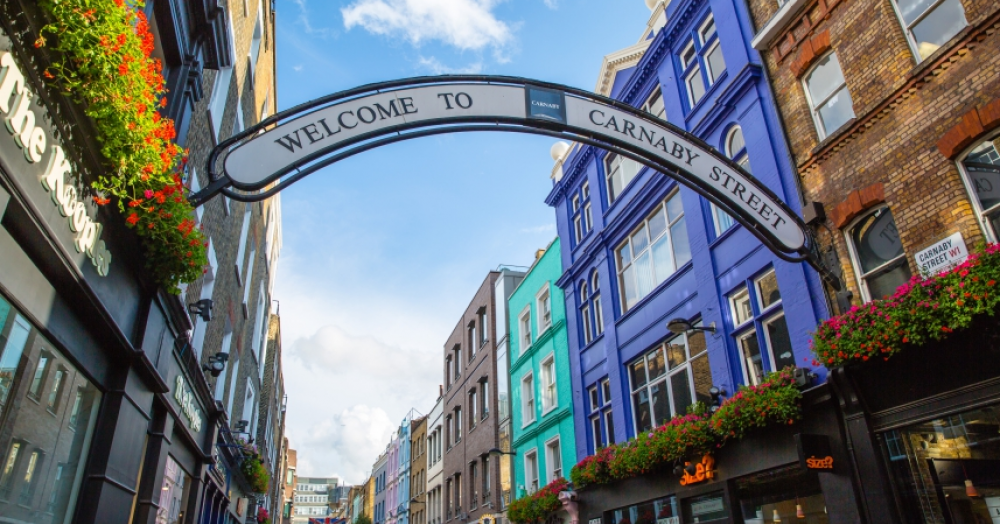Trying to encapsulate Soho in a limited word count is beyond difficult, we’ve prepared a bit of the back story to draw you into this area that’s filled with a plethora of CULTURE, FOOD, MUSIC, ARTS AND WATERING HOLES!! It would be impossible to tell you everything so its best you find out for yourself!
HISTORY OF SOHO
Soho is an area of the City of Westminster, part of the West End of London. Originally a fashionable district for the aristocracy, it has been one of the main entertainment districts in the capital since the 19th century.
The area was developed from farmland by Henry VIII in 1536, when it became a royal park. It became a parish in its own right in the late 17th century, when buildings started to be developed for the upper class, including the laying out of Soho Square in the 1680s.
St Anne's Church was established during the late 17th century, and remains a significant local landmark; other churches are the Church of our Lady of the Assumption and Saint Gregory and St Patrick's Church in Soho Square.
The aristocracy had mostly moved away by the mid-19th century when Soho was particularly badly hit by an outbreak of cholera in 1854. For much of the 20th century Soho had a reputation as a base for the sex industry in addition to its night life and its location for the headquarters of leading film companies.
Since the 1980s, the area has undergone considerable gentrification. It is now predominantly a fashionable district of upmarket restaurants and media offices, with only a small remnant of sex industry venues. London's gay community is centred on Old Compton Street in Soho.
Soho's reputation as a major entertainment district of London stems from theatres such as the Windmill Theatre on Great Windmill Street and the Raymond Revue bar owned by entrepreneur Paul Raymond, and music clubs such as the 2i's Coffee Bar and the Marquee Club. Trident Studios was based in Soho, and the nearby Denmark Street has hosted numerous music publishing houses and instrument shops from the 20th century onwards.
The independent British film industry is centred around Soho, including the British headquarters of Twentieth Century Fox and the British Board of Film Classification offices. The area has been popular for restaurants since the 19th century, including the long-standing Kettner's which was visited by numerous celebrities.
Near to Soho is London's Chinatown, centred on Gerrard Street and containing several restaurants.
STREETS OF SOHO
Berwick Street was built between 1687 and 1703, and is probably named after James FitzJames, 1st Duke of Berwick, the illegitimate son of James II of England. It has held a street market since the early 18th century, which has been formally organised since 1892.
Carnaby Street was laid out in the late 17th century. It was named after Carnaby House, built on the street's eastern side in 1683. In 1957, a fashion boutique was opened, and Carnaby Street became the fashion centre of 1960s Swinging London.
Dean Street was built in the 1680s and was originally settled by French immigrants. It is home to the Soho Theatre, and a pub known as The French House which during World War II was popular with the French Government-in-exile. Karl Marx lived at No. 64 Dean Street around 1850. The Colony Club was founded by Muriel Belcher and based at No. 41 Dean Street from 1948 to 2008. It was frequented by several important artists including Francis Bacon, Lucian Freud and Frank Auerbach.
Frith Street was named after Richard Frith, a local builder. On Roque's Map of London, it is marked as Thrift Street. It was a popular aristocratic residence, although without as many foreign residents as some other streets. A plaque above the stage door of the Prince Edward Theatre identifies the site where Mozart lived as a child between 1764 and '65. John Logie Baird first demonstrated television in his laboratory at No 22 in 1926. The premises is now the location of Bar Italia. Ronnie Scott's Jazz Club is located at No 46 Frith Street having moved there from Gerrard Street in 1965.
Old Compton Street is named after the Bishop of London Henry Compton, and was first laid out in the 1670s, fully developed by 1683. During the late 18th and 19th centuries, it became a popular meeting place for French exiles. The street was the birthplace of Europe's rock club circuit (2i's club) and contained the first adult cinema in England (The Compton Cinema Club). Dougie Millings, who was the famous tailor for The Beatles, had his first shop at 63 Old Compton Street, which opened in 1962.

